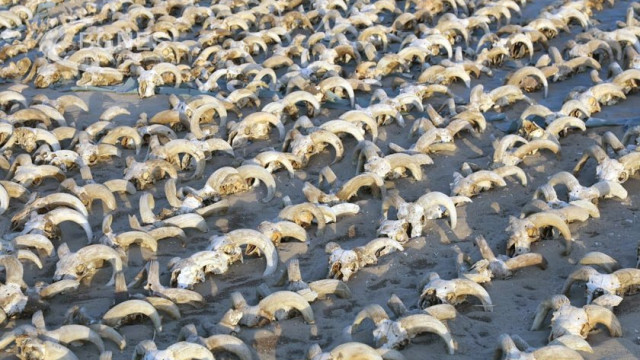Scientists from the Chinese Academy of Sciences have found evidence that the Great Permian Extinction was caused by the thinning of the ozone layer due to massive volcanic eruptions. This is reported in a paper published in the journal Chemical Geology.
Researchers estimate that about 81% of all marine animal species and 70 % of terrestrial vertebrate species went extinct at the end of the Permian period of the Paleozoic era, but the event also affected plant life. The cause of this greatest catastrophe in Earth's history is linked to supervolcanism in Siberia, which is confirmed by massive deposits of pyroclastic flows over an area of about seven million square kilometres.
Scientists analyzed the sulfur isotope content (sulfur-33, sulfur-34 and sulfur-36) in microscopic pyrite grains from Permian deposits. Shortly before the end of this period, anomalous levels of sulfur-33 and sulfur-36 were detected. This cannot be explained by isotopic fractionation due to geological processes and requires photolysis of volcanic SO2 under the influence of ultraviolet.
Such significant changes have rarely been observed in rocks less than two billion years old due to the gradual increase in the planet's oxygen supply and the formation of ozone over time. Thus, scientists suggest that photolysis occurs in the absence or significant depletion of the ozone layer.
As soon as explosive volcanism destroyed the ozone layer, oxygen molecules blocking incoming solar ultraviolet radiation decreased, resulting in the conversion of sulfur dioxide molecules into sulfate aerosols that were transported from land to the oceans. This is supported by modeling that suggests atmospheric oxygen dropped from 30 percent during the Phanerozoic (which began 538 million years ago) to half that amount by the end of the Permian. /BGNES







